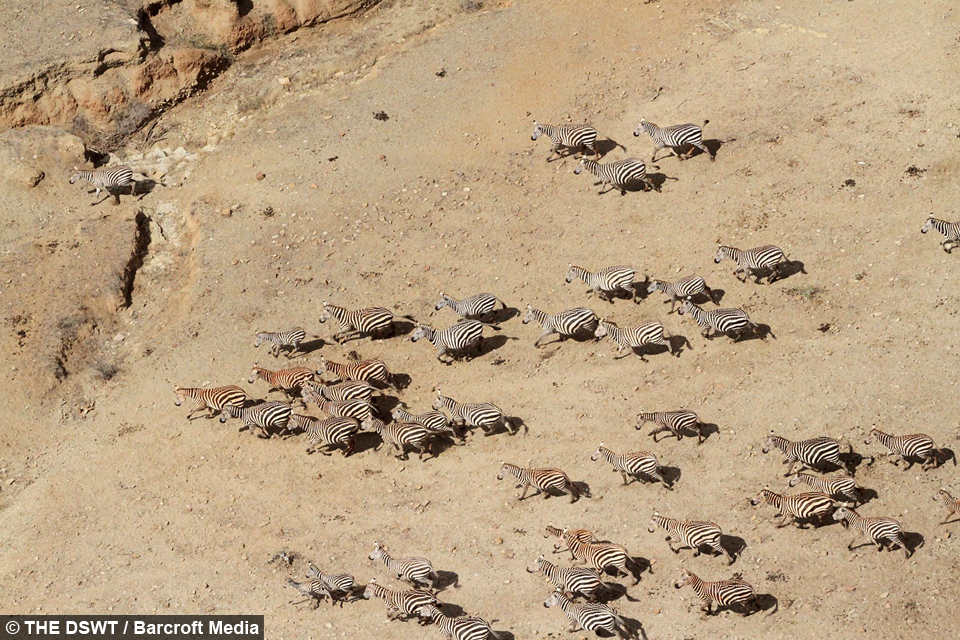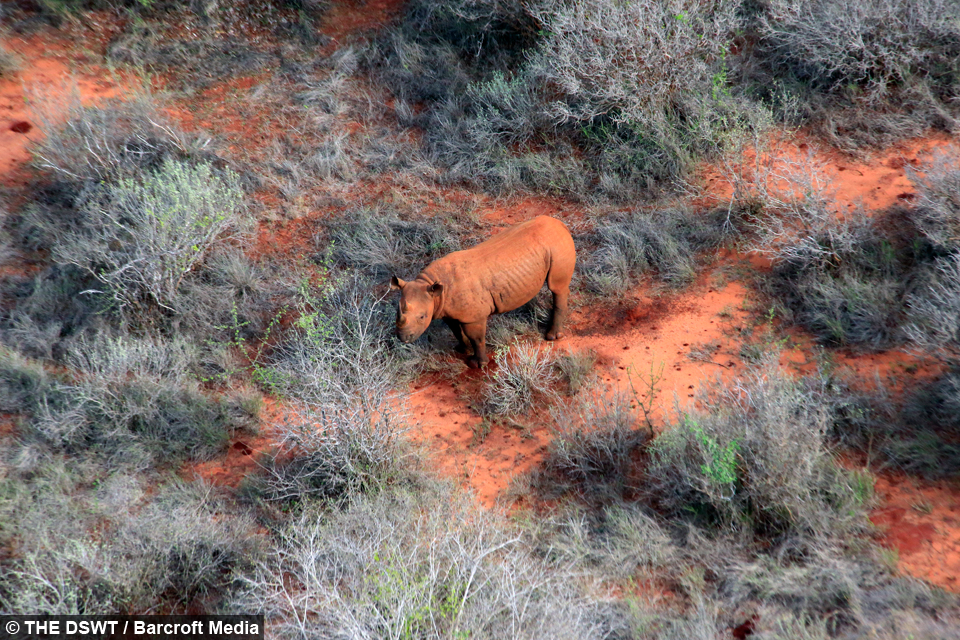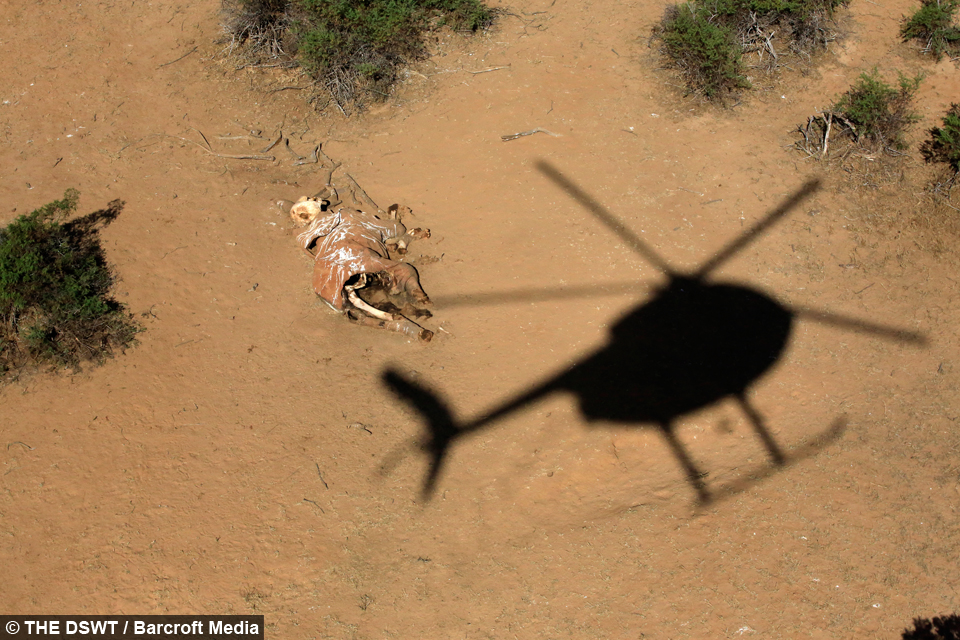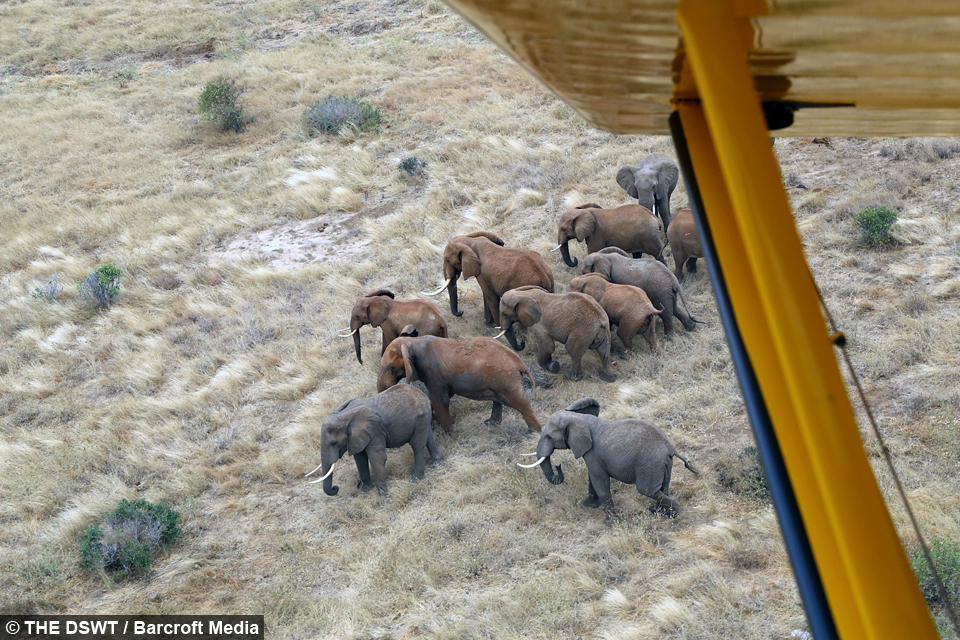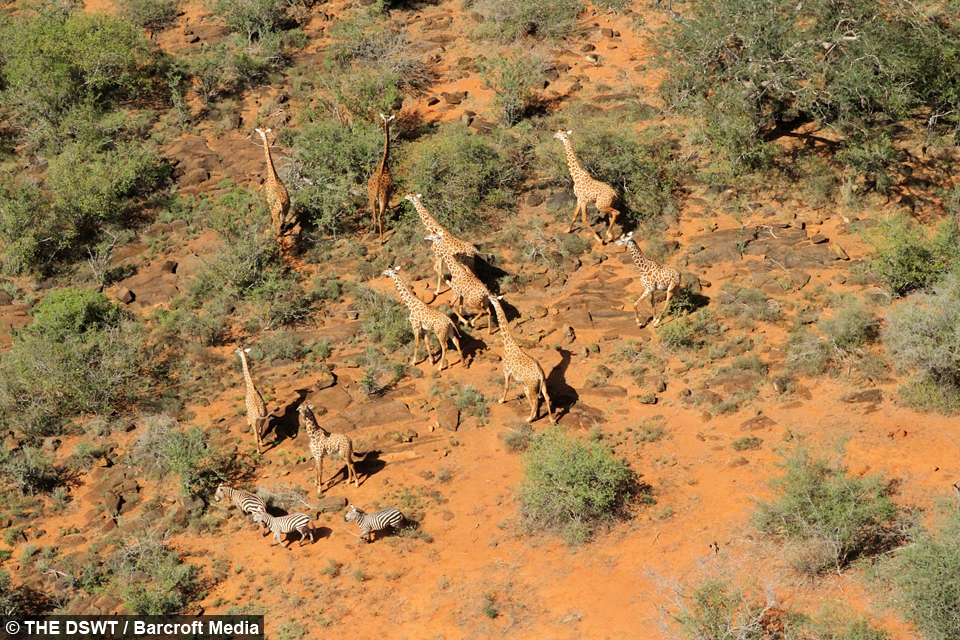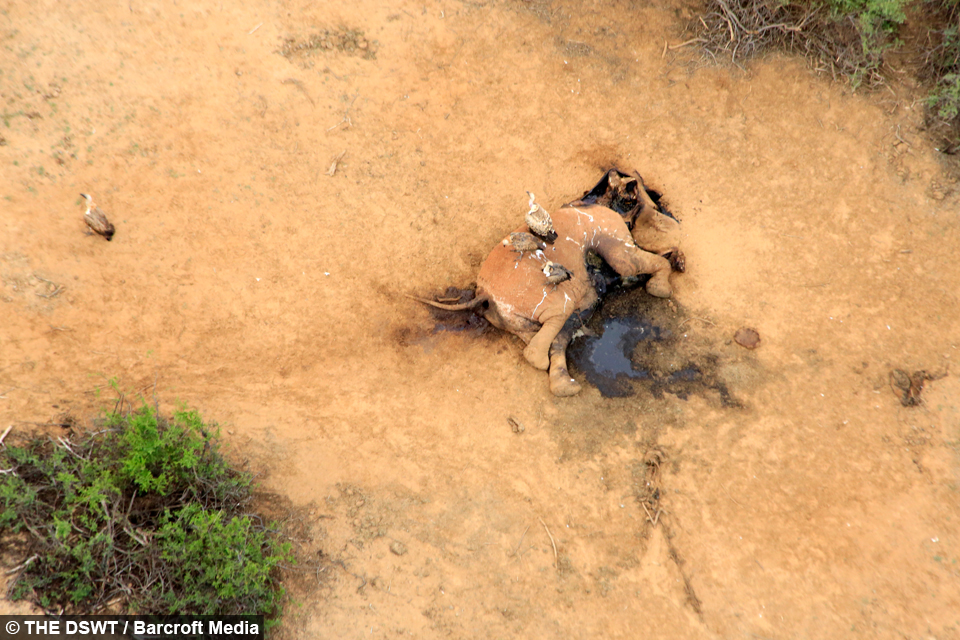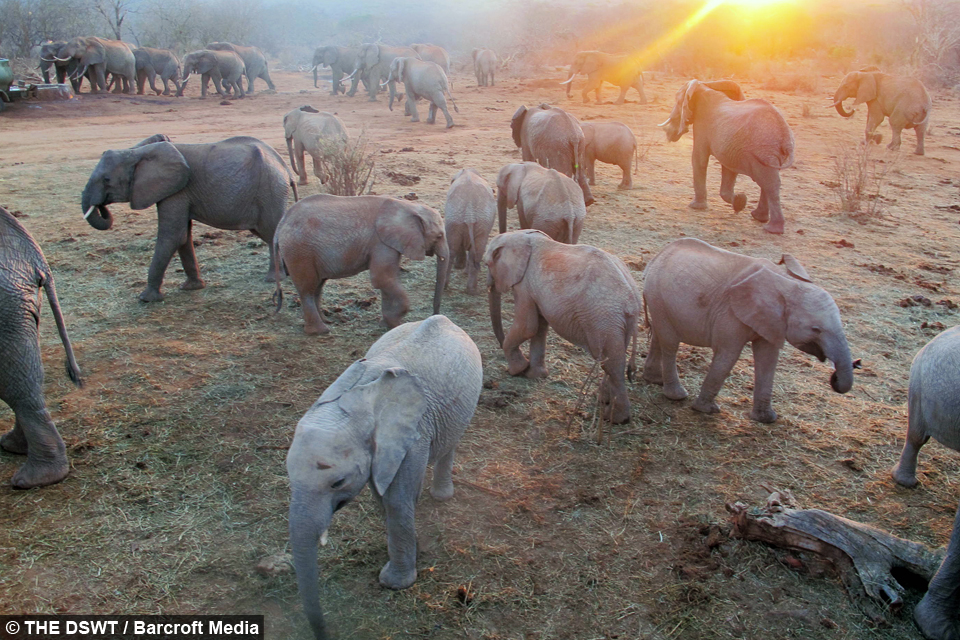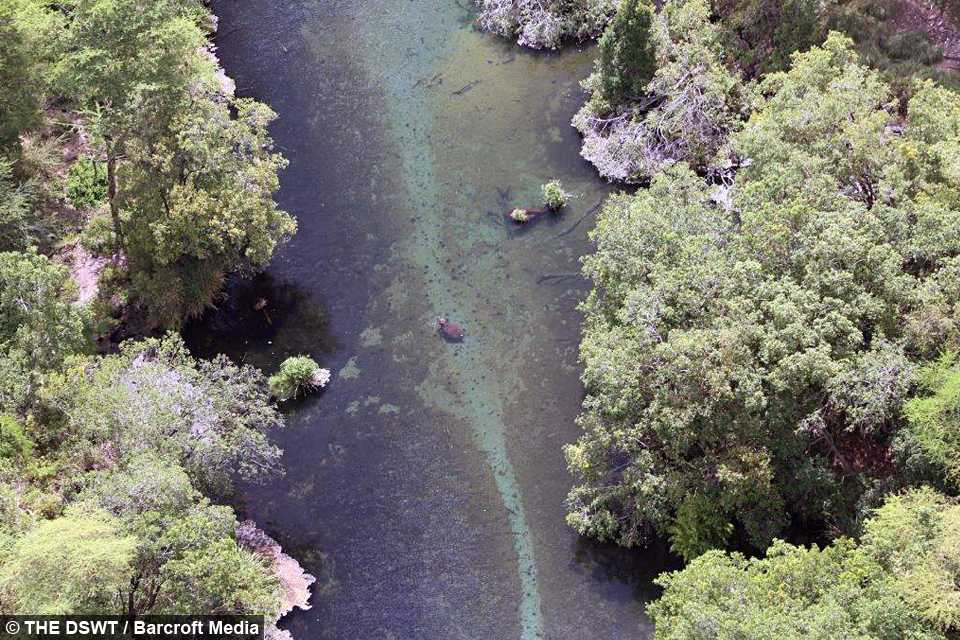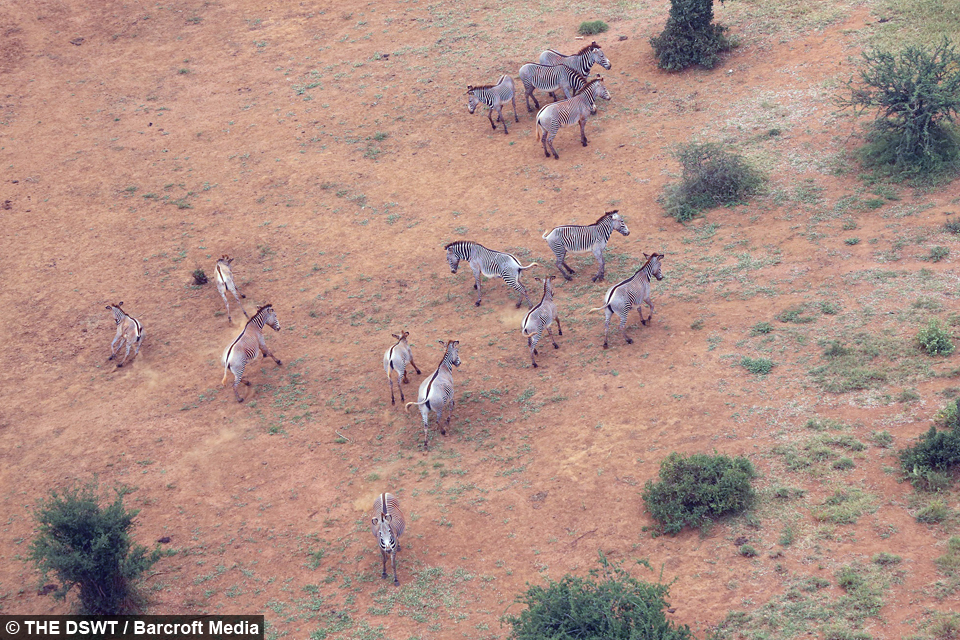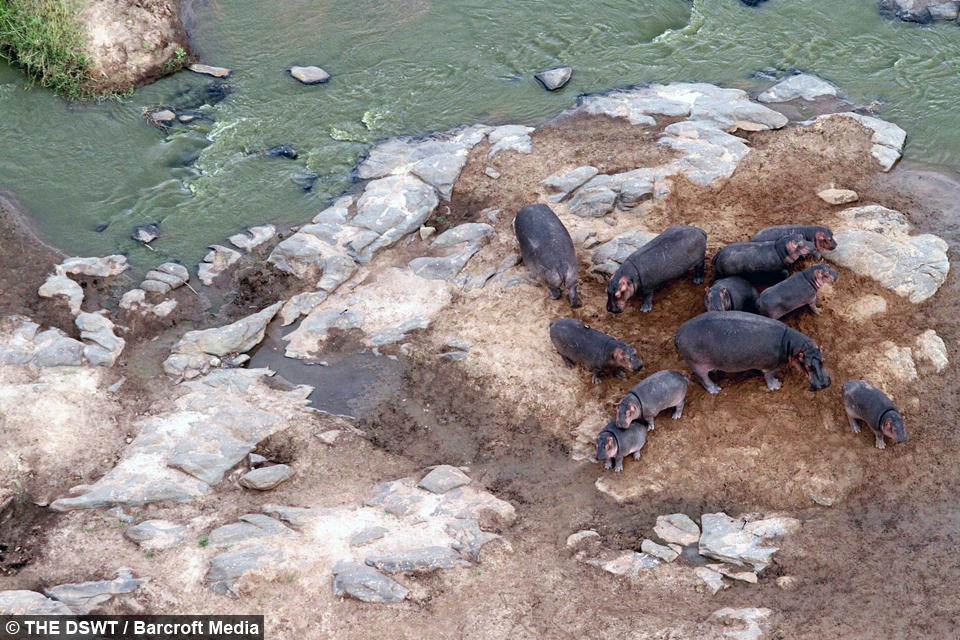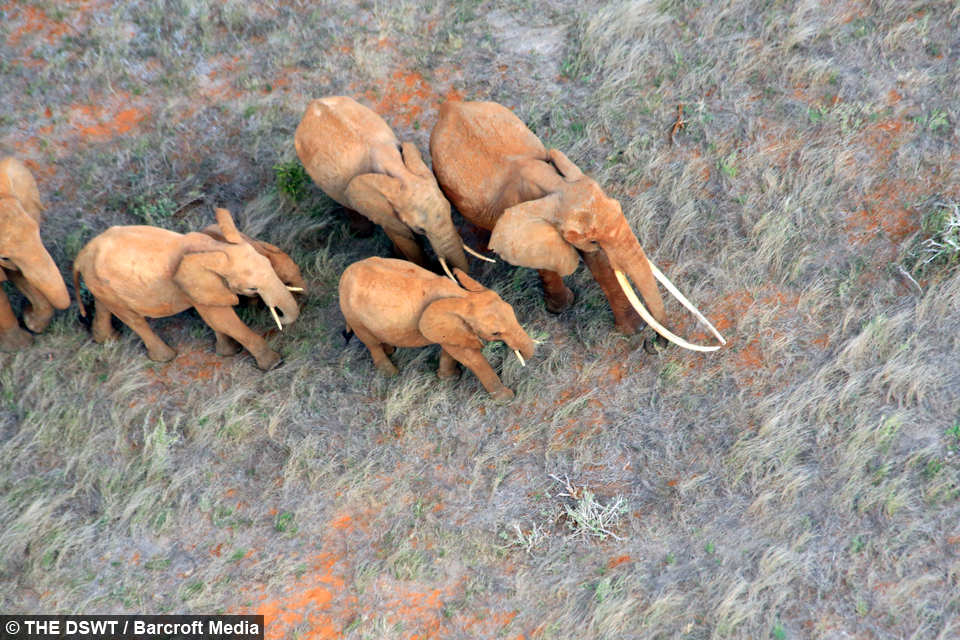Stunning Birds-Eye Views Of Wildlife In Southern Kenya
By Tom Gillespie @TomGillespie1
Scroll down for the full story
In one photo a zeal of zebras is seen sprinting across part of the Tsavo Conservation Area, while another shows a family of hippos and their young.
The stunning images also capture a lone leopard pacing through the wilderness while buffalos are spotted resting in the shade.
The photos were taken from helicopters and aeroplanes by the pilots of an anti-poaching patrol, who have also documented the affects of the illegal practice.
One galling image captures a decapitated elephant carcass providing a feast for scavengers.
In another an elephant’s bones can be seen where its flesh has either been devoured or rotted away.
The David Sheldrick Wildlife Trust (DSWT) flies aircraft over the Tsavo Conservation Area to tackle ivory and bush meat poaching.
Chief pilot Nick Trent took some of the photos, and said: The butchery of elephants in a place that should be safe and tranquil in the centre of Kenya’s largest national park is a stark reminder of how serious the war against poaching is."
The DSWT has nine anti-poaching teams in the country who work alongside the Kenya Wildlife Service.
In July alone the teams confiscated 551 snares and made 56 arrests.
Executive director of The David Sheldrick Wildlife Trust (UK) Rob Brandford said: "Poachers in Tsavo range from well-armed Somali poachers to those who live on the fringes of the park, armed with silent poisoned arrows and spears.
"After ivory has been hacked away, which can sometimes occur while elephant is still alive, the ivory will be trafficked out of the park, usually in a vehicle, bicycle or on foot.
"Mombasa in Kenya is a major port in East Africa and a highway for illegal ivory.
"In April this year Thailand seized three tonnes of ivory that had passed through Mombasa."
Aeroplane pilot Nick Trent and helicopter pilot Humphrey Carter took the aerial photos between 2014 and 2015.
In one image giraffes stand in close proximity to zebras, while another shows a lone black rhino.

